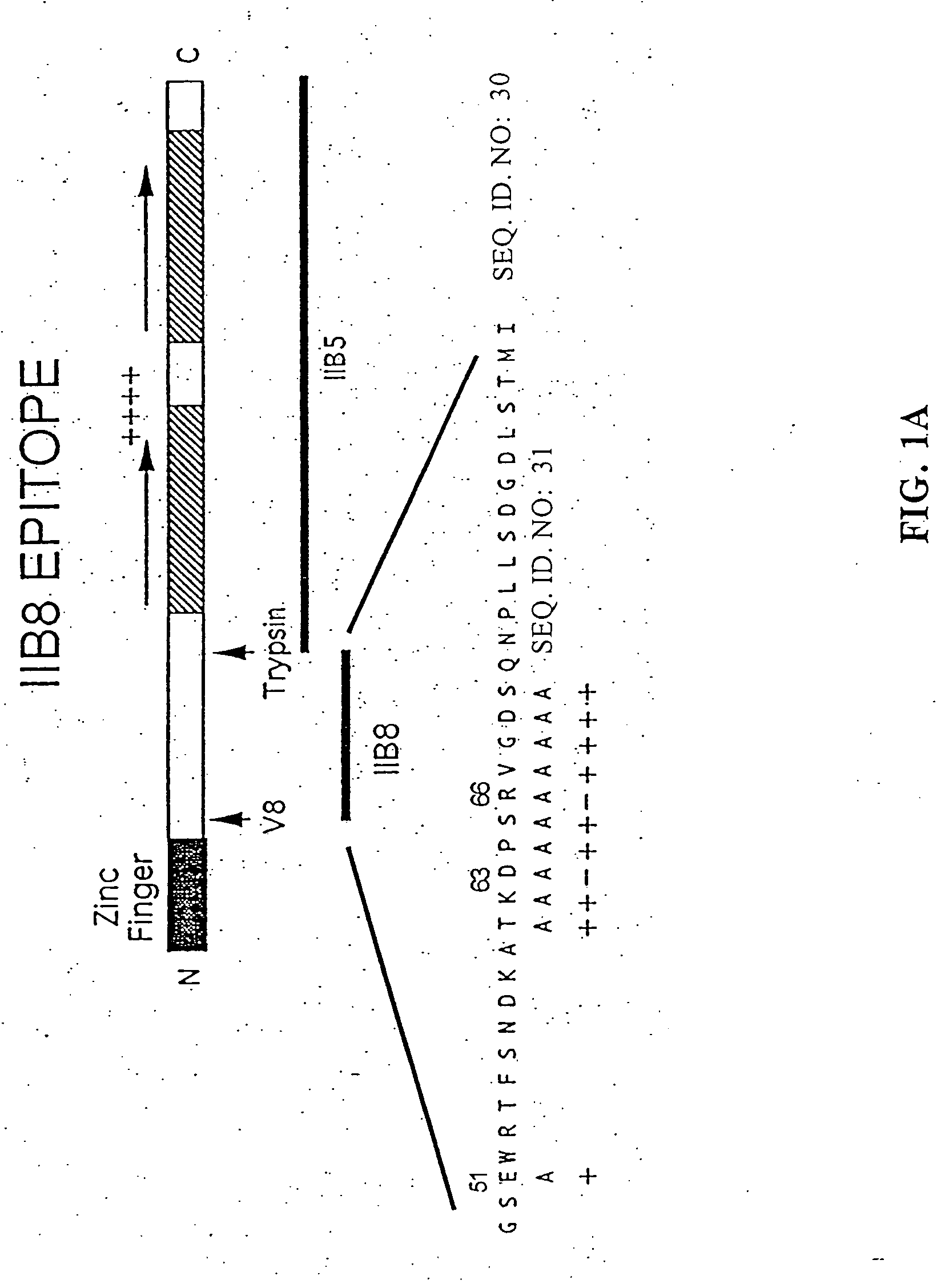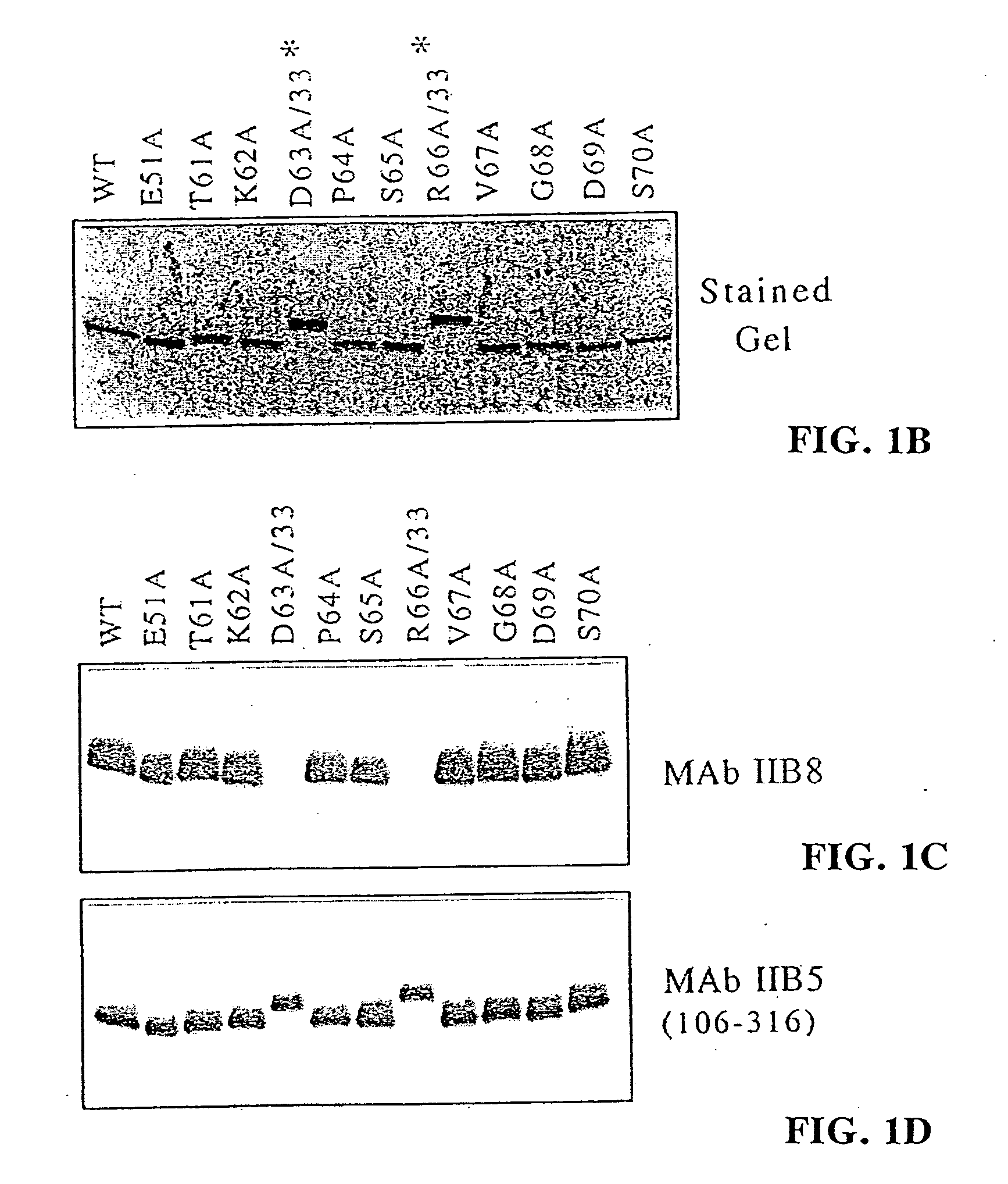Immunoaffinity chromatography using epitope tags to polyol-responsive monoclonal antibodies
a polyol-responsive monoclonal antibody and immunoaffinity chromatography technology, applied in the direction of immunoglobulins against animals/humans, peptides, biological material analysis, etc., can solve the problems of inherently limited purification method, inability to completely reproduce antibody preparation from one immunized animal, and more troublesome concerns
- Summary
- Abstract
- Description
- Claims
- Application Information
AI Technical Summary
Problems solved by technology
Method used
Image
Examples
example 1
Results and Significance of Example 1
[0084] Epitope Mapping: TFIIB plays an essential role in the assembly of the RNA polymerase II initiation complex. The PR-mAb IIB8 inhibits transcription through interaction with this protein near the N-terminus [12]. In order to identify the exact epitope recognized by IIB8, phage display was employed (FIG. 1a). The library consisted of 12-amino acid insertions into the pIII protein of M13 phage. Eight phage were sequenced of which three phage showed the consensus sequence DXSR.
[0085] To further test this sequence, selective amino acid mutations were used. Nine (9) residues were individually mutated to alanine in order to see whether this change affected the reactivity of IIB8 to TFIIB on a Western blot (see FIG. 1, panels b-d). Upon mutation of residues 63 and 66, the antibody was no longer reactive. Mutation of residue 65 showed a lower affinity. Based on these results, TKDPSRVG (SEQ. ID. NO: 25) (amino acids 61-68) was hypothesized to be the...
example 2
Results and Significance of Example 2
[0105] Epitope mapping: The β′ subunit of E. coli RNAP consists of 1407 amino acids and is one of the largest proteins in E. coli. An attempt to identify the epitope for mAb NT73 by phage display was not successful (unpublished data). Therefore, several approaches had to be combined in order to deal with the large β′ protein, and yet identify the smallest epitope tag.
[0106] The rough location of the NT73 epitope was determined by the “ordered fragment ladder” method previously described [34, 35]. The ordered fragment ladder indicated that the NT73 epitope was located in the last 112 amino acids of the protein (FIG. 10A). Western blots showing the reactivity of mAbs NT73 and NT 15 with the ordered fragment ladders are shown in FIG. 10B. Mapping of the NT 15 epitope (located N-terminal of this region), provided a convenient control mAb for further mapping of the NT73 epitope by preparing deletions from the C-terminal end of the molecule. Therefore...
PUM
| Property | Measurement | Unit |
|---|---|---|
| pH | aaaaa | aaaaa |
| pH | aaaaa | aaaaa |
| concentration | aaaaa | aaaaa |
Abstract
Description
Claims
Application Information
 Login to View More
Login to View More - R&D
- Intellectual Property
- Life Sciences
- Materials
- Tech Scout
- Unparalleled Data Quality
- Higher Quality Content
- 60% Fewer Hallucinations
Browse by: Latest US Patents, China's latest patents, Technical Efficacy Thesaurus, Application Domain, Technology Topic, Popular Technical Reports.
© 2025 PatSnap. All rights reserved.Legal|Privacy policy|Modern Slavery Act Transparency Statement|Sitemap|About US| Contact US: help@patsnap.com



